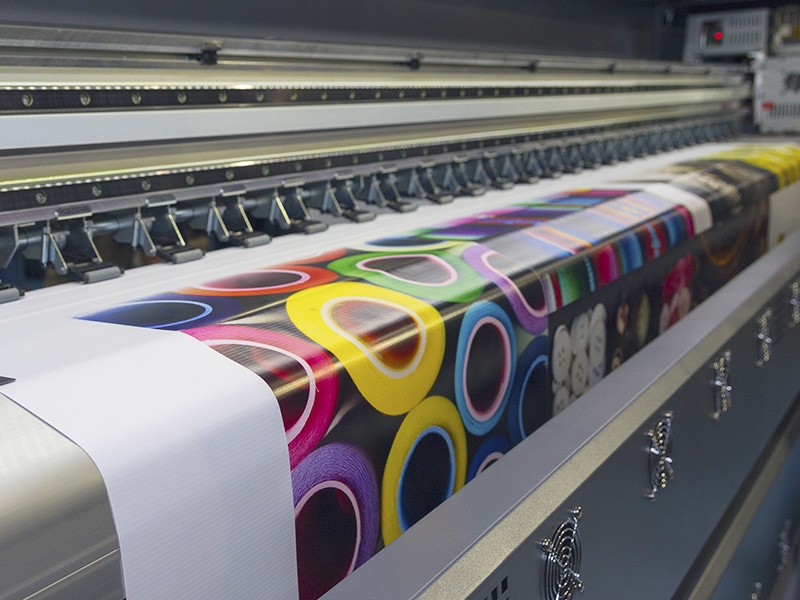In the ever-evolving world of printing, offset printing for variable data stands out as a game-changer. This innovative approach combines the traditional strengths of offset printing with the flexibility of digital technologies, making it a preferred choice for businesses seeking customized print solutions. By understanding how offset printing for variable data works, companies can leverage this technology to enhance their marketing strategies and improve customer engagement.

The Basics of Offset Printing
Offset printing is a widely used commercial printing technique that transfers ink from a plate to a rubber blanket, then onto paper. Known for its high-quality output and cost-effectiveness in large print runs, it has been a staple in the printing industry for decades. For those unfamiliar with the concept, you can explore more about the [history and technicalities of offset printing](https://en.wikipedia.org/wiki/Offset_printing) here.
Understanding Variable Data Printing
Variable data printing (VDP) allows for the customization of print materials by changing elements such as text, graphics, or images from one piece to the next, without slowing down the printing process. This personalization is critical for businesses aiming to target specific demographics with tailored messages.
Combining Offset with Variable Data
By integrating variable data capabilities with offset printing, businesses can achieve the best of both worlds: the high-quality, cost-effective output of offset and the personalized, targeted approach of digital printing. This synergy is particularly beneficial for large-scale direct mail campaigns, personalized brochures, and customized marketing materials.
Benefits of Offset Printing for Variable Data
The combination of these technologies offers several advantages, including:
- High Quality: Offset printing is renowned for its superior print quality, which remains consistent even with varied data inputs.
- Cost Efficiency: For large-scale projects, offset remains more cost-effective compared to digital printing.
- Personalization: Businesses can tailor their messages to different audience segments without compromising on quality.
- Scalability: This approach is ideal for large print runs where individual customization is required.
Applications in Business
Numerous industries can benefit from offset printing for variable data. For instance, in the retail sector, companies can create personalized direct mail campaigns that resonate with individual customers. Similarly, financial institutions can utilize this technology to deliver customized statements and communications to their clients.
Businesses looking to integrate this technology can learn more about the [cost implications](https://fullcolorprintingfirm.com/cost-of-offset-printing/) here and how it compares with other methods like flexo printing in this [detailed comparison](https://blog.focuslabel.com/difference-between-offset-and-flexo-printing) article.
Implementing Offset Printing for Variable Data
To successfully implement this technology, businesses need to consider several factors:
Choosing the Right Equipment
Investing in the right printing equipment is crucial. Companies must ensure their printers are compatible with variable data software and capable of handling large print volumes efficiently.
Data Management
Effective data management is vital for successful variable data printing. Businesses must have robust systems in place to handle customer data securely and efficiently.
Design Considerations
Designing for variable data printing requires a strategic approach. Designers need to create templates that allow for seamless integration of variable elements without compromising the overall aesthetic.
Future Trends in Offset Printing for Variable Data
The future of offset printing for variable data looks promising, with technological advancements continuing to enhance its efficiency and capabilities. The integration of AI and IoT technologies is set to revolutionize the printing industry, offering even more sophisticated personalization options.
Businesses can stay ahead of the curve by exploring emerging trends such as [AI and IoT in printing](https://fullcolorprintingfirm.com/ai-iot-in-printing-14/) here and [Edge AI](https://fullcolorprintingfirm.com/edge-ai-in-printing/) applications in the sector.
Challenges and Solutions
While the benefits are substantial, offset printing for variable data also presents challenges, such as high initial investment costs and the need for skilled personnel. However, these can be mitigated through careful planning and investment in training.
Case Studies: Success Stories
Several businesses have successfully adopted offset printing for variable data to enhance their marketing efforts and improve customer engagement. For instance, a leading retail chain used this technology to create personalized catalogs, resulting in a significant increase in customer response rates.
Conclusion
In conclusion, offset printing for variable data represents a powerful tool for businesses seeking to combine quality and personalization in their print materials. By embracing this technology, companies can enhance their marketing strategies, improve customer relationships, and ultimately drive business growth.

FAQs
What is offset printing for variable data?
Offset printing for variable data combines traditional offset printing with digital technology, allowing for high-quality, personalized print materials.
How does variable data printing benefit businesses?
Variable data printing allows businesses to customize their print materials for individual customers, enhancing personalization and improving engagement.
What industries can benefit from offset printing for variable data?
Industries such as retail, finance, and marketing can benefit significantly from the personalized and cost-effective solutions offered by offset printing for variable data.
This article contains affiliate links. We may earn a commission at no extra cost to you.







